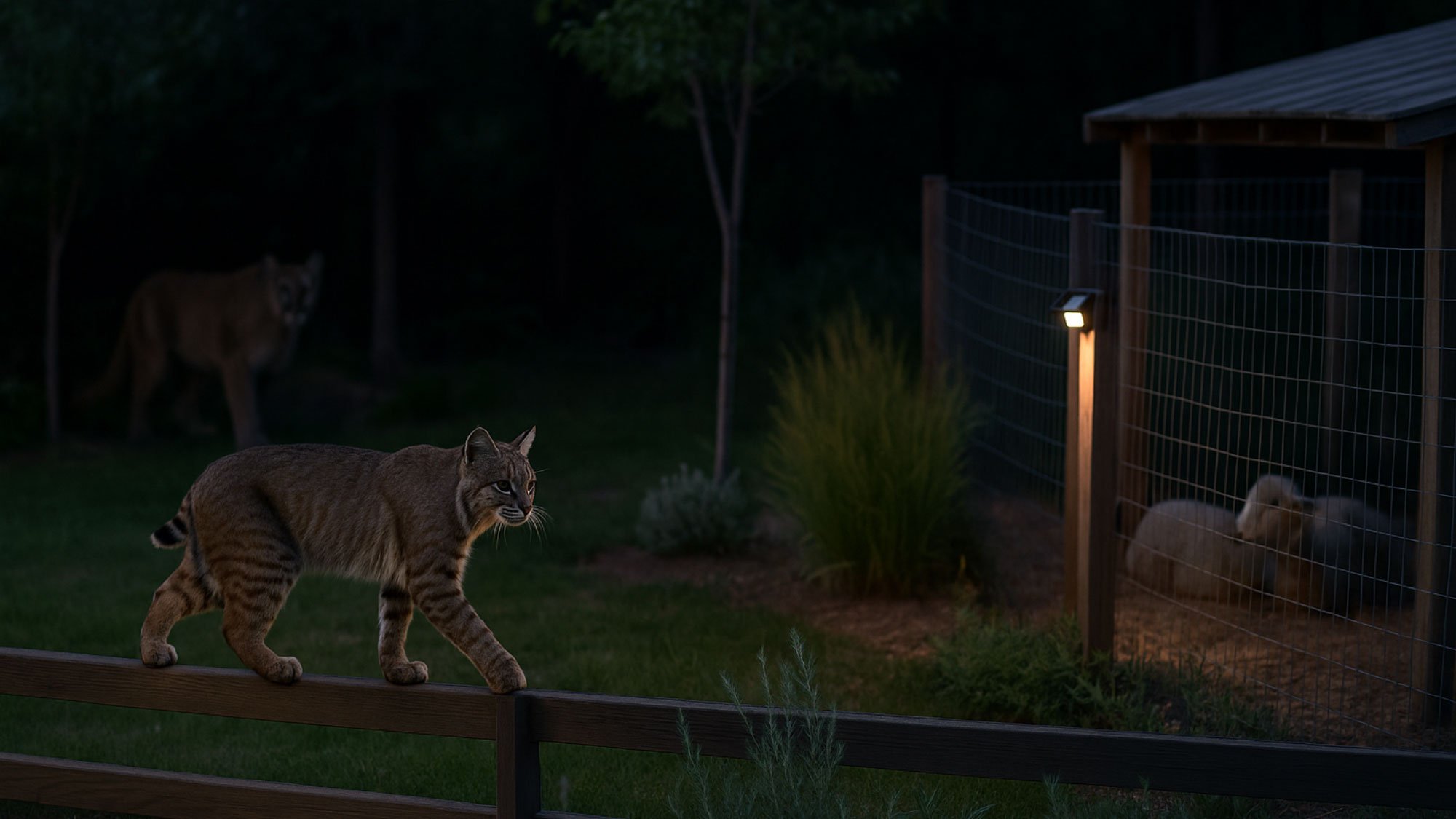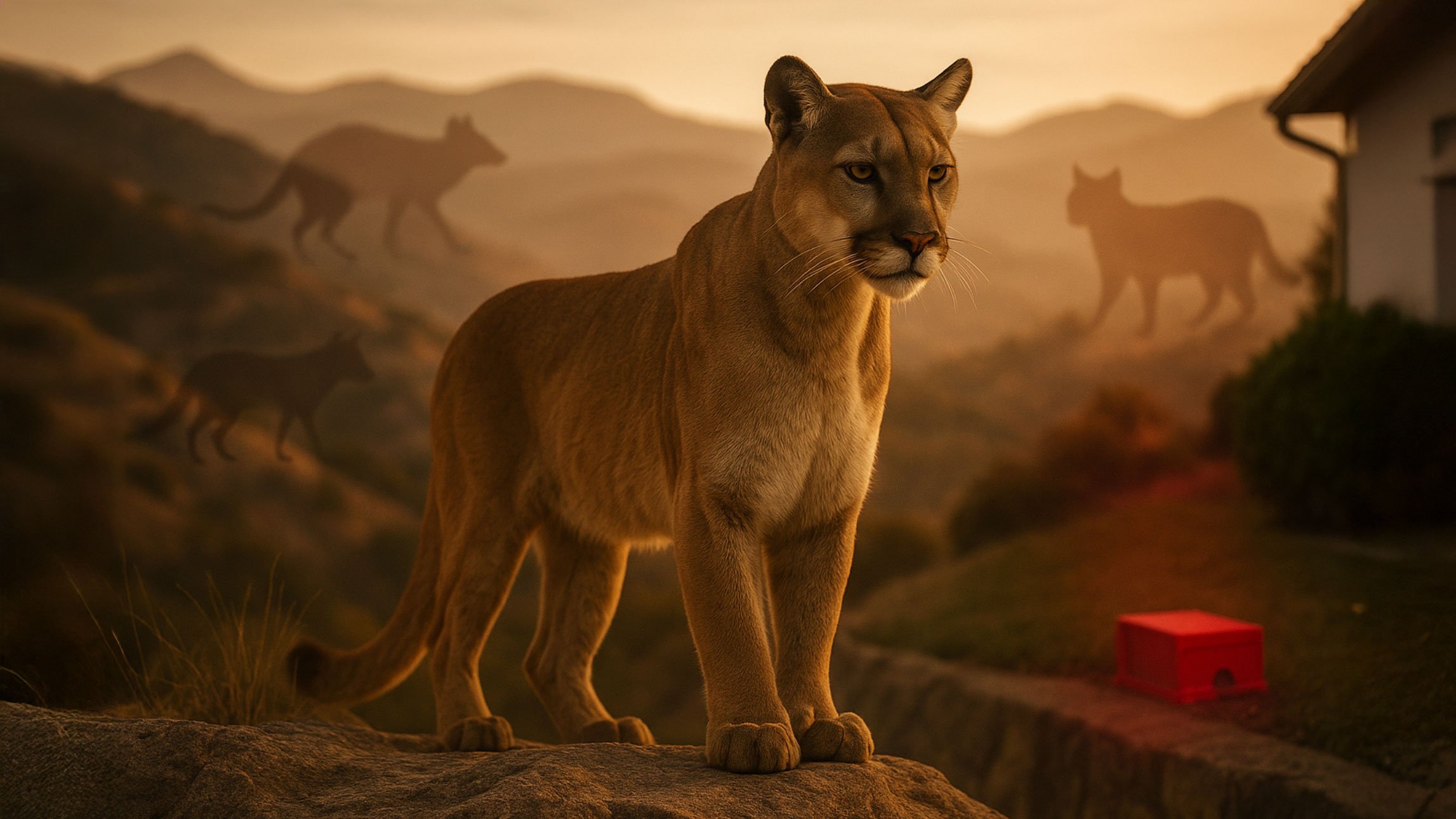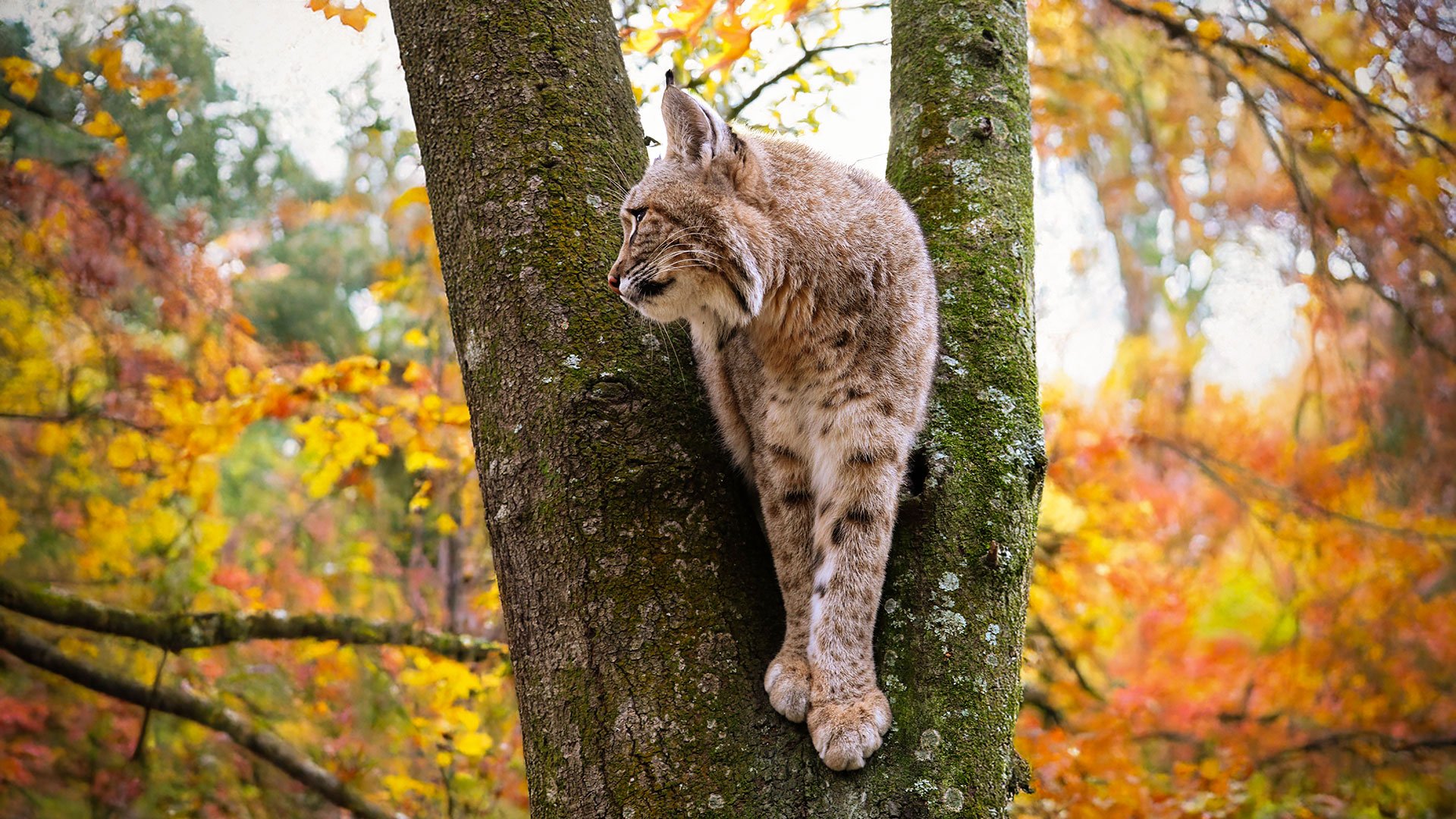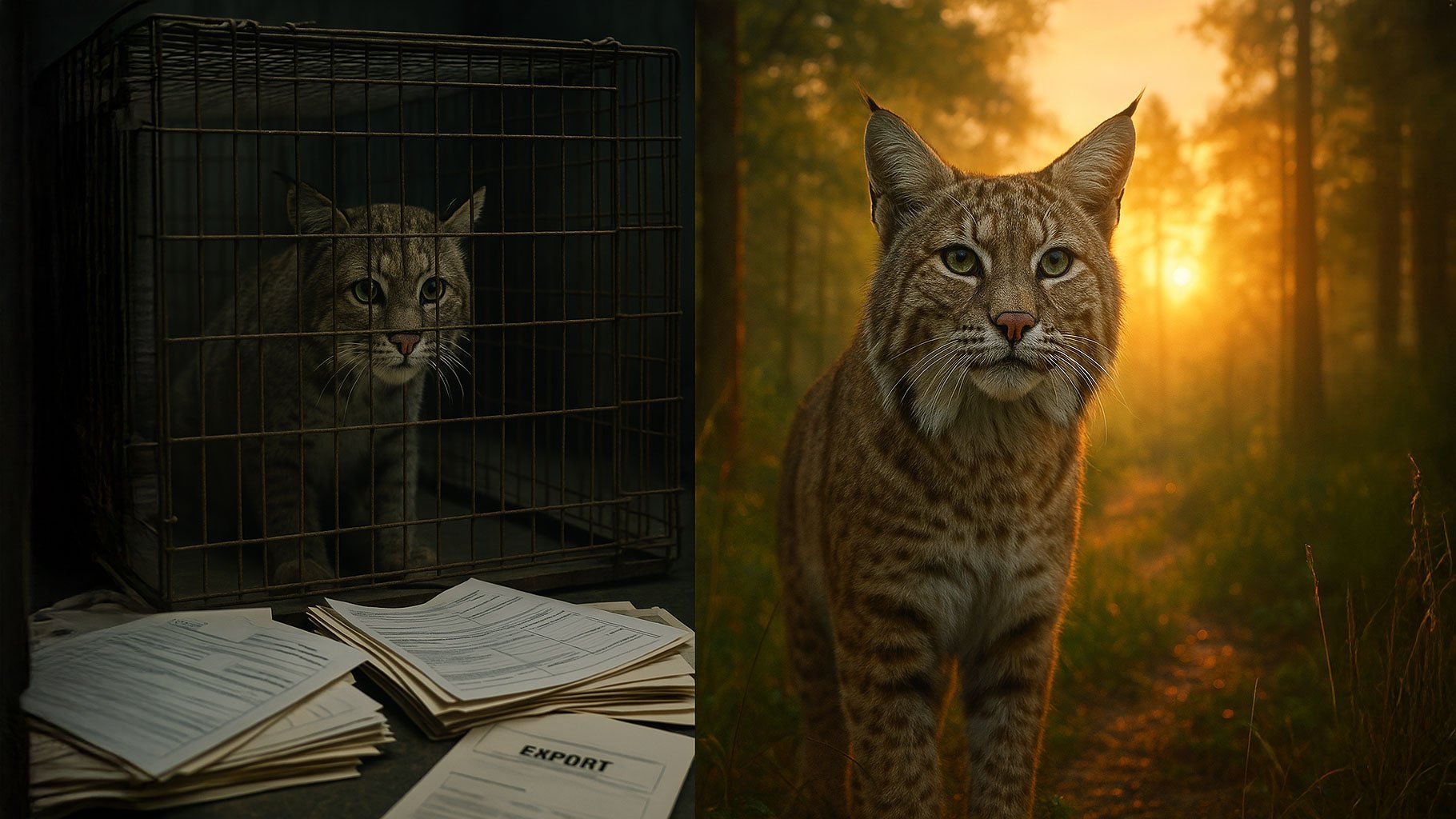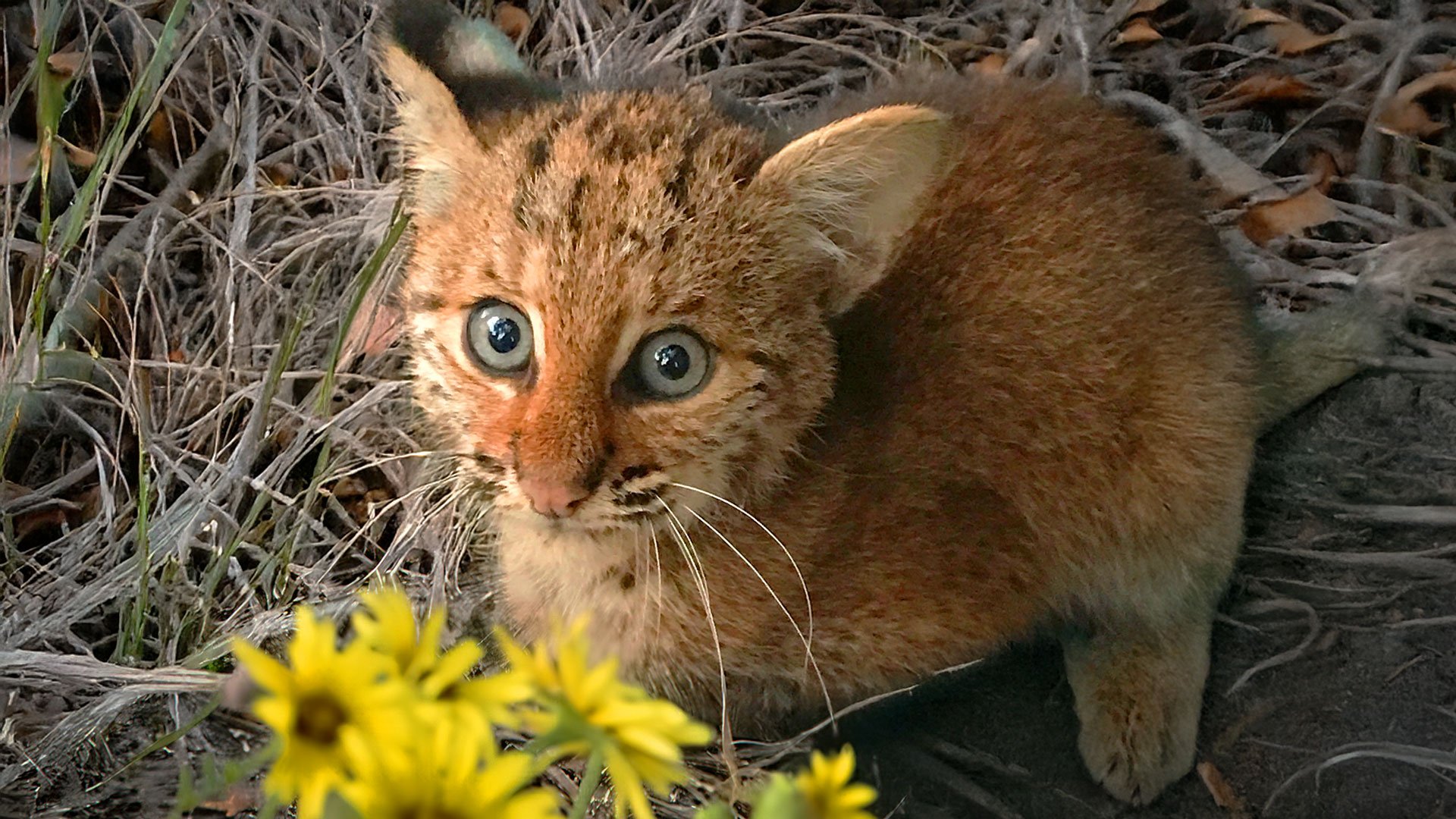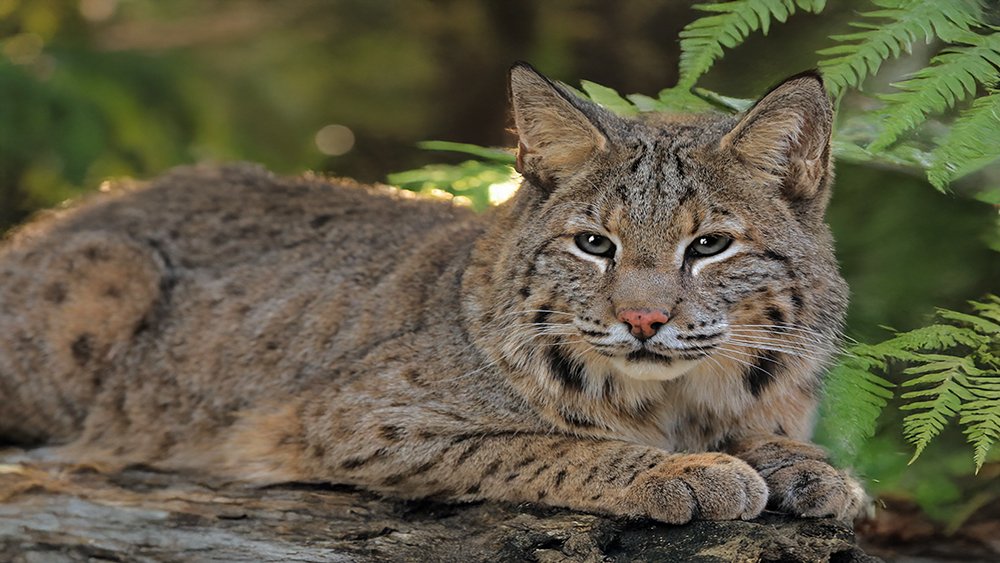Bobcat Facts
Precious Bobcat in a tree at Big Cat Rescue
Bobcat
Bobcat kitten
Common Name: Bobcat
Kingdom: Animalia
Phylum: Chordata (Vertebrata)
Class: Mammalia
Order: Carnivora
Family: Felidae
Genus: Felinae (Lynx)
Species: rufus
Sub-Species: L.r. escuinapae Mexican bobcat
Misc: This cat is named for its short tail.
Size and Appearance: The Bobcat is a medium sized cat with a ruff of fur around the sides of the face. They weigh between 13-30 pounds, stand 21 inches high and are 30-50 inches long. The bobcats in the North tend to be larger than those in the south. Their coat color varies and has been recorded in shades of light gray, yellowish-brown, buff-brown, and reddish-brown. They are always spotted to some extent, with some patterned only on the undersides, and others having spots on the sides and chest backs too. The southern Bobcats seem to have a more spotted coat, with the spots being much smaller than the northern cats. Both melanistic and albinistic Bobcats have been reported, but the melanistic ones have only occurred in Florida. They are often confused with their larger feline cousin the Lynx, but can be easily distinguished by their tail tips. The tail of the Lynx looks as though it was dipped in an inkwell being black all the way around, whereas the Bobcat’s tail appears to have been painted black on top and white on the bottom.
Habitat: Boreal and coniferous mixed forests, hardwood forest, coastal swamps, desert and scrubland.
Distribution: United States and Southern Canada.
Reproduction and Offspring: After a gestation of approximately 50-70 days, females produce a litter of 1-8 kittens, with the average being 2-3. They weigh 9.75-12 ounces at birth and will open their eyes at around 6 days. They are weaned between 3-4 months of age, and reach sexual maturity around 12 months for females, and 24 months for males.
In the wild, Bobcats live 12-13 years, and at Big Cat Rescue they have lived over twenty years.
Social System and Communication: Solitary. Male territories will overlap that of many females and even to some extent another males, but female territories are exclusive. Males and females only come together at the breeding season, which is December to April. Hear our purrs, hisses, snarls, calls, and growl sounds HERE
Hunting and Diet: These tough little cats will eat almost anything, and are natural born survivors (except for man’s interference). Their primary diet is rabbit, but they also eat rodents, beaver, peccaries, birds and bats, and deer. They are also scavengers.
Principal Threats: This little cat was the most heavily harvested and traded member of the cat family for the past 20 years. In the 1970’s CITES went into effect and the pelts of the Appendix 1 cats became illegal and unobtainable, the price offered to trappers for a Bobcat pelt went from $20.00 to $600.00. This also caused the number of Bobcats killed annually to rise from 10,000 to over 90,000 by the 1980s. The interest in Bobcat pelts today was declining due to international awareness of the cruel methods of trapping and prohibitions against trade of animals trapped using these methods up until 2008 when Russia began buying all the bobcat pelts they could get their hands on. This surge in demand threatens to wipe the bobcat out of America. The bobcat also battles the ever growing human population and its destruction of all habitat in its path. According to 2001 statistics provided from actual sales of hunting permits, over 40,000 bobcats are still being killed each year. This figure does not include all the bobcats killed by hunters who do not buy licenses nor report their kills. Less than 3% of our population are hunters but they kill over 100 million animals each year for sport.
Status: CITES: Appendix II. IUCN: Not listed.
Felid TAG 2000 recommendation: Bobcat (Lynx rufus). Many bobcats are present in zoos in numbers that are deleterious to other RCP species. Although the TAG recognizes that bobcats have an important role in regional theme exhibits, it is suggested that AZA holders help reduce the North American population from morethan 125 individuals to 0. For zoogeographic exhibits, the TAG suggests that institutions consider exhibiting Canadian lynx, rather than bobcats. If theme dictates bobcat exhibition, animals should be acquired from other AZA institutions or from sanctuary or rescue organizations. No breeding is recommended. At the Annual AZA Conference (September 1999), the following four species were recommended by the Felid TAG to be 'down-graded' to a Phase-Out populations. For the jaguarundi, tigrina, and Geoffroy's cat, these recommendations were made because of limited space available, the limited number of founders in these populations, and limited potential for acquiring additional founders. The bobcat was recommended for Phase-Out due to commonality in nature. Additionally, where zoogeographic exhibits exist, the TAG recommends exhibiting Canadian lynx rather than the bobcat.
How rare is this cat? According to Defenders of Wildlife, a conservation group based in Washington D.C., there are about 750,000 to 1,020,000 bobcats as of 2009. The International Species Information Service lists 245 captive bobcats worldwide, with 191 being in U.S. zoos.
Information reprinted With Permission from the IUCN Wild Cats Book
See Conservation Work Funded By Big Cat Rescue here:
2023 Saving Bobcats
6/4/2023 Michael Levin PhD student at Columbia University overseen by Laurel Serieys, who works with Panthera’s small cat team are collaring bobcats to learn more about the threats they face and ways to mitigate those threats.
All conservation insitu work: https://bigcatrescue.org/insitu/



